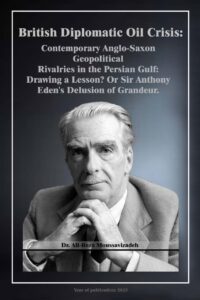The British Imperial Establishment, Post Imperial Era, and the ‘Churchillian’ World View, 1945-2016. (Adjustments & Challenges in Contemporary British Diplomatic Strategy)
41
of the
other continental nations, because they had more ships than all other nations
put together, and there were
very few British families who had not sent a man
abroad for either sailing a vessel or fighting a war or to
settle altogether.
Furthermore, over many years they had created an imperial elite to whom Empire
was a
true vocation. These rulers were products of the institutions that were
defined in chapter one, notably the
public schools. These schools taught a man to
be disciplined, uncomplaining and reserved. Generally the boys
had an early
experience of command. The members of the imperial rulingclass “stood to gain
directly
from existence of Empire, in jobs, in dividends, and so forth”14.
These
accomplishments and pride had evolved over many years but it was
in the nineteenth century that this
evolution seemed to develop most and reach its
high point. Towards the end of century, however, France and
Germany were seen
as the potential threats to the British interest. Therefore, Chamberlain saw
it
appropriate to officially advocate a policy that both protected British interests and
continued to
hold the doors open for acquiring new markets to meet the needs of
home developments.
“Between the 1880s and 1930s British imperial power stood at its pinnacle.
During the decades
leading up to the 1914-18 war the size of the Empire
continued to grow as new territories were added,
generally with startling ease, all
around the globe. The treaties arranging the peace following that war
brought the
Empire to its greatest extent, as various mandated territories formerly belonging
to the
defeated states were entrusted to Britain’s care.”15
The
British Empire covered over a quarter of the world’s land surface and
contained a quarter of mankind. The
British flag flew in every climate and on
every continent. The human and material resources of the Empire
surpassed those
of Ancient Rome or sixteenth century Spain, just as they dwarfed those of
the
contemporary French, Dutch or German Empires.
Pages: 1 2 3 4 5 6 7 8 9 10 11 12 13 14 15 16 17 18 19 20 21 22 23 24 25 26 27 28 29 30 31 32 33 34 35 36 37 38 39 40 41 42 43 44 45 46 47 48 49 50 51 52 53 54 55 56 57 58 59 60 61 62 63 64 65 66 67 68 69 70 71 72 73 74 75 76 77 78 79 80 81 82 83 84 85 86 87 88 89 90 91 92 93 94 95 96 97 98 99 100 101 102 103 104 105 106 107 108 109 110 111 112 113 114 115 116 117 118 119 120 121 122 123 124 125 126 127 128 129 130 131 132 133 134 135 136 137 138 139 140 141 142 143 144 145 146 147 148 149 150 151 152 153 154 155 156 157 158 159 160 161 162 163 164 165 166 167 168 169 170 171 172 173 174 175 176 177 178 179 180 181 182 183 184 185 186 187 188 189 190 191 192 193 194 195 196 197 198 199 200 201 202 203 204 205 206 207 208 209 210 211 212 213

